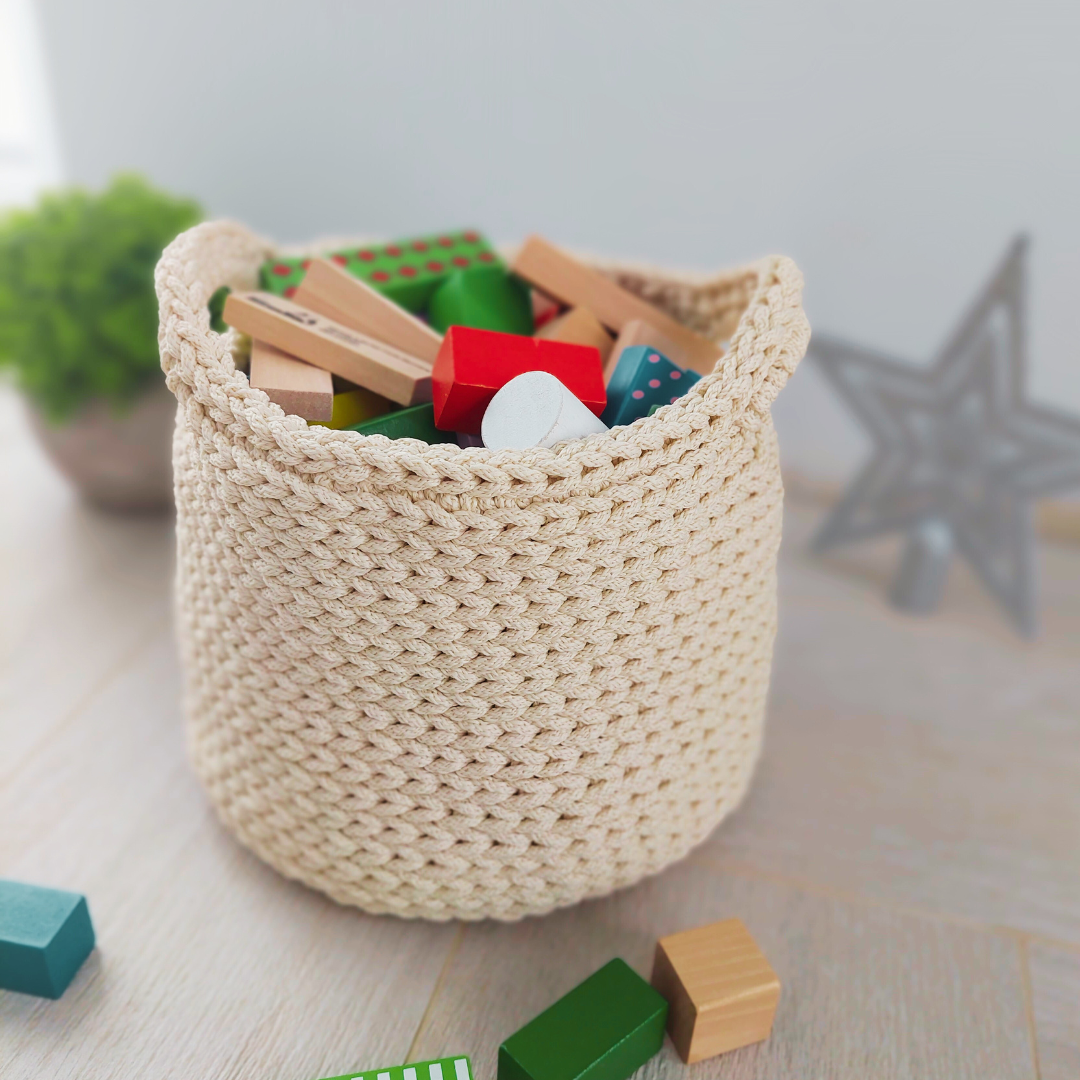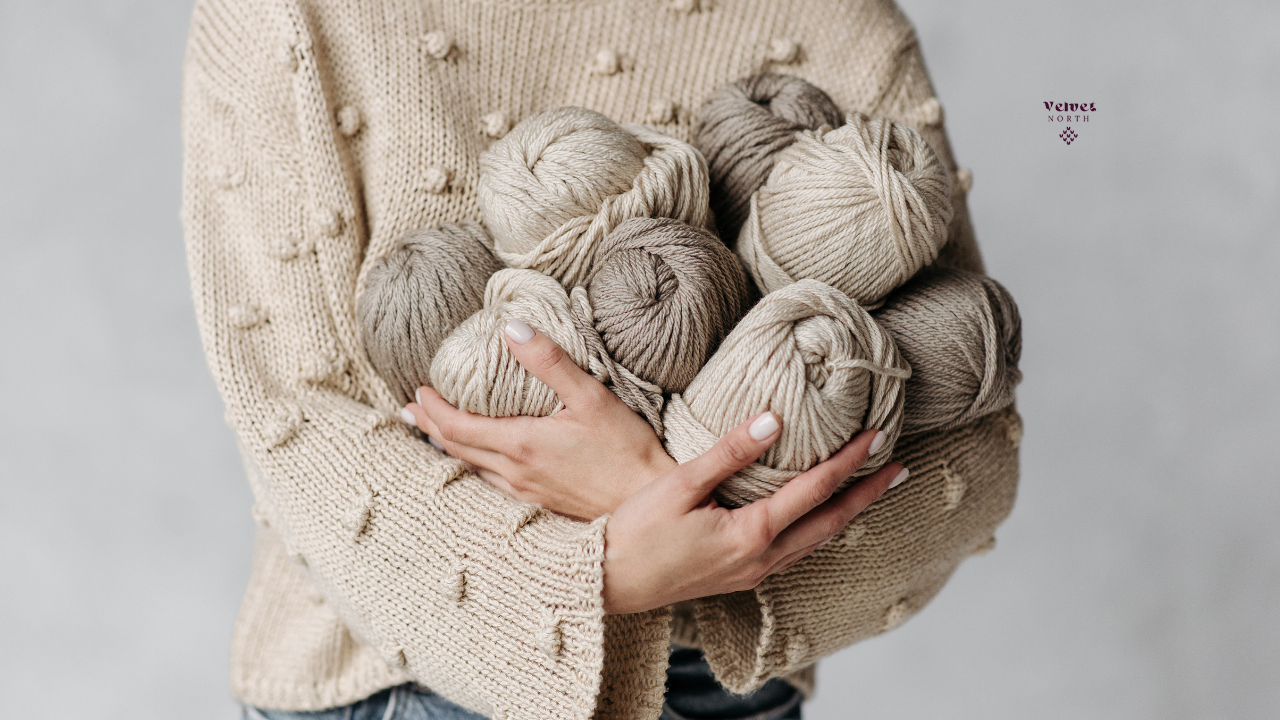
Knitting 101: Mastering Yarn Calculations for Perfect Projects
When embarking on a knitting project, one of the most crucial aspects to consider is estimating the right amount of yarn needed. Running out of yarn halfway through or ending up with excessive leftovers can be frustrating. That’s why mastering yarn calculations is a skill every knitter should acquire. Whether you’re a beginner or an experienced knitter, having the ability to accurately determine yarn requirements can save you time, money, and ensure successful outcomes for your projects.
In this comprehensive guide, we’ll delve into the world of yarn calculations, unraveling the mysteries behind yarn weight, yardage, and the factors that influence yarn usage. We’ll explore various techniques and formulas to estimate yarn quantities for different project types, sizes, and stitch patterns. Additionally, we’ll discuss how to adapt yarn quantities when substituting yarns, altering sizes, or making design modifications. Furthermore, we’ll provide tips for handling yarn shortages and incorporating leftover yarns creatively.
Whether you’re planning to knit a cozy sweater, a delicate lace shawl, or a vibrant colorwork masterpiece, this guide will equip you with the knowledge and tools to confidently estimate yarn requirements, make informed choices, and ensure you have the right amount of yarn for your knitting endeavors. Get ready to unravel the secrets of yarn calculations and embark on a journey of successful knitting projects. Let’s dive in!
Table of Contents
ToggleSection 1: Understanding Yarn Weight and Yardage
In this section, we’ll delve into different yarn weights and how they affect the overall yardage needed for a project. Accurate yarn calculations prevent running out of yarn. I explore common yarn weight classifications and provide a general overview of yardage expectations in different blog post. Here is summary:
- Laceweight yarn may have yardage ranging from 400 to 1000 yards (366 to 914 meters) per 100 grams.
- Fingering yarn typically has yardage ranging from 350 to 450 yards (320 to 411 meters) per 100 grams.
- Sport and DK yarns generally have yardage ranging from 250 to 350 yards (229 to 320 meters) per 100 grams.
- Worsted/Aran weight yarn typically has yardage ranging from 180 to 220 yards (165 to 201 meters) per 100 grams.
- Bulky weight yarn generally has yardage ranging from 100 to 150 yards (91 to 137 meters) per 100 grams.
- Super bulky yarns usually have yardage ranging from 60 to 90 yards (55 to 82 meters) per 100 grams.
Section 2: Estimating Yarn Requirements for Simple Projects
Here, we’ll discuss how to estimate yarn amounts for basic projects, such as scarves, hats, and simple baby blankets. We’ll introduce formulas and guidelines to help you calculate the yardage required based on the desired finished size.
When it comes to simple knitting projects like scarves, hats, and baby blankets, estimating the amount of yarn needed is relatively straightforward. By following some basic guidelines and utilizing simple formulas, you can calculate the yardage required based on your desired finished size. Let’s explore yarn calculation process step by step:
Determine the Finished Size:
Start by deciding on the dimensions you want for your project. For example, if you’re knitting a scarf, consider the desired length and width. For a hat, think about the circumference and height. And for a baby blanket, determine the dimensions you wish to achieve.
Check the Pattern or Reference:
If you’re following a pattern, it may provide specific yardage requirements based on the recommended yarn and needle size. Refer to these guidelines as a starting point for estimating your yarn needs. Keep in mind that the pattern’s recommended yardage is usually for a specific size or gauge, so adjustments may be necessary based on your project specifications.
Calculate the Total Stitches or Surface Area:
To estimate the yardage needed, calculate the total number of stitches or the surface area of your project. For a scarf, multiply the desired width in inches by the number of stitches per inch (gauge). This will give you the total number of stitches across the width. Multiply this by the desired length to get the total number of stitches in your scarf. For hats and blankets, calculate the surface area in a similar manner.
Estimate Yardage per Stitch or Surface Area:
Now, estimate the yardage required per stitch or surface area. This estimation will vary depending on the yarn weight and your knitting tension. As a starting point, you can use the average yardage per stitch based on common yarn weights. For example, for worsted weight yarn, you can estimate around 1 yard per stitch in the width. Adjust this estimate based on your personal knitting tension and the stitch pattern you plan to use. Similarly, for surface area, you can estimate yardage per square inch or square centimeter.
Multiply and Adjust:
Multiply the total number of stitches or surface area (step 3) by the estimated yardage per stitch or surface area (step 4). This will give you an initial estimate of the total yardage required for your project. Keep in mind that this is an estimation and may require adjustments based on factors like stitch pattern, yarn fiber content, and personal knitting style.
Add Extra Yarn:
To account for potential variations, it’s always wise to add a bit of extra yarn to your estimate. This additional yarn will ensure you have enough to complete your project and account for any swatching or small mistakes that may require extra yarn for corrections.
Remember, these calculations are just guidelines, and the actual yardage required may vary based on your specific project and knitting style. Additionally, it’s always better to have more yarn than you need rather than running out mid-project, as dye lots may differ, or the same yarn may not be available when you need it.
By following these estimation techniques, you’ll be able to calculate the approximate yardage needed for simple projects like scarves, hats, and baby blankets. With practice, you’ll develop a better understanding of your own knitting tendencies and be able to estimate yarn requirements more accurately. Yarn calculations are essential for successful knitting projects.
Section 3: Accounting for Pattern Complexity
When tackling more intricate patterns, it becomes important to consider additional factors that influence yarn requirements. We’ll discuss stitch patterns, lacework, and cables, providing practical advice on adjusting your calculations accordingly.
When estimating yarn requirements for knitting projects, it’s crucial to consider the complexity of the pattern you’ll be working on. The stitch pattern, texture, and design elements can significantly impact the amount of yarn needed. In this section, we’ll explore how to account for pattern complexity and make adjustments to your yarn estimates accordingly.
Stitch Patterns:
Different stitch patterns require varying amounts of yarn. For example, lace or cable patterns tend to use more yarn compared to simple stockinette stitch. Intricate stitch patterns often create more surface area, resulting in increased yarn consumption. If you’re working on a project with complex stitch patterns, consider adding a buffer to your yarn estimate to ensure you have enough to complete the design as intended.
Colorwork:
Colorwork projects, such as Fair Isle or intarsia, involve using multiple colors of yarn. When estimating yarn requirements for colorwork, you’ll need to consider not only the total yardage required for each color but also any potential yarn wastage during color changes. Keep in mind that color dominance and yarn floats can affect yardage consumption. It’s a good practice to add extra yarn to your estimates for colorwork projects, especially if you’re unfamiliar with the specific technique or pattern.
Texture and Embellishments:
Texture and embellishments, such as bobbles, cables, or fringe, can also impact yarn usage. These elements often require additional yarn to create the desired effect. When estimating yarn requirements for projects with texture or embellishments, consult the pattern instructions or reference resources to determine if any specific yardage adjustments or recommendations are provided.
Swatching:
Swatching is an essential step in knitting, allowing you to test your gauge and determine how the yarn will behave in the chosen stitch pattern. While swatching itself doesn’t require a significant amount of yarn, it’s essential to factor in the yardage used during this process. Swatching helps you achieve accurate gauge, which directly influences the overall yardage needed for your project. Be sure to account for swatching when estimating your yarn requirements.
Unravel Allowance:
In some cases, you may need to unravel or frog a section of your project due to mistakes or changes. Unraveling can result in some yarn wastage. To account for this, it’s advisable to include an allowance for unraveled yarn in your estimates. This way, you’ll have enough yarn to redo or fix sections without running short.
Section 4: Factoring in Your Knitting Tension
Your knitting tension, also known as gauge, plays a crucial role in determining the final size of your project and the amount of yarn you’ll need. We’ll explain how to measure your tension accurately and how to incorporate it into your calculations.
Knitting gauge determines the size and shape of your finished project. For example, if you’re knitting a sweater and your gauge is too loose, the finished sweater will be too large. If your gauge is too tight, the sweater will be too small. Getting gauge right ensures that your finished project matches the measurements and size specified in the pattern. Read more why is knitting gauge important.
Section 5: Tips for Adjusting Yarn Amounts
Sometimes, you may need to modify a pattern or make adjustments to the yarn suggested. We’ll share useful tips on how to adapt yarn quantities when substituting yarns, altering sizes, or making design modifications.
Knitting allows for endless creativity and customization, and there may be times when you want to substitute yarns, alter sizes, or make design modifications to a pattern. When making these changes, it’s important to adapt your yarn quantities accordingly. In this section, we’ll share useful tips on how to adjust yarn amounts to ensure a successful outcome for your modified projects.
Yarn Substitutions:
When substituting yarn, it’s essential to consider the weight, fiber content, and yardage of the new yarn compared to the original yarn recommended in the pattern. Start by comparing the gauge information provided for both yarns. If the gauge is different, you’ll need to adjust your yarn quantities to match the gauge of the pattern. Calculate the difference in gauge and determine the percentage change in stitches per inch or centimeter. Then, apply this percentage to the total stitch count or surface area to estimate the new yarn requirements. Keep in mind that different fibers and textures may affect yarn usage, so it’s advisable to have extra yarn on hand when substituting.
Altering Sizes:
If you’re adjusting the size of a pattern, whether making it larger or smaller, the yarn quantities will vary. Determine the percentage change in measurements and apply this percentage to the estimated yarn requirements provided in the pattern. For example, if you’re making a larger sweater, you’ll likely need more yarn, while a smaller size may require less. However, bear in mind that significant size modifications can significantly impact the yardage needed. It’s always better to have extra yarn than to run out, so consider adding a buffer to your estimates when altering sizes.
Design Modifications:
When making design modifications, such as adding or removing stitch patterns, adjusting stitch counts, or incorporating additional design elements, yarn quantities may also need to be adjusted. Evaluate the impact of the modifications on the overall stitch count or surface area of the project. Calculate the percentage change and apply it to the original yarn estimate. Keep in mind that intricate stitch patterns or design elements may require additional yarn to achieve the desired effect.
Swatching and Measuring:
Swatching is an integral part of any knitting project, particularly when making modifications. Take the time to swatch with your chosen yarn and stitch pattern to ensure your gauge matches the pattern requirements. Measure your swatch accurately and compare it to the gauge provided in the pattern. Adjust your yarn quantities based on any differences in gauge, as this will affect the number of stitches or surface area required for your modified project.
Consulting Resources and Experienced Knitters:
If you’re uncertain about how modifications will impact yarn quantities, don’t hesitate to seek advice from knitting resources or experienced knitters. Online knitting communities, forums, and social media groups can provide valuable insights and guidance based on their own experiences. Additionally, knitting reference books and resources may offer specific guidelines or formulas for adjusting yarn quantities in various situations.
Remember, it’s always better to have a bit more yarn than needed, especially when making modifications, as you may encounter unforeseen challenges or adjustments along the way. By adapting yarn quantities to match yarn substitutions, size alterations, and design modifications, you’ll have the confidence to bring your personalized knitting projects to life.
Section 6: Calculating Yarn Quantities for Colorwork
Colorwork projects, such as Fair Isle or intarsia, require special considerations when it comes to estimating yarn requirements. We’ll explore techniques to calculate the amount of yarn needed for each color and ensure you have enough for your vibrant creations.
The use of multiple colors and the nature of colorwork patterns can significantly impact yardage requirements. In this section, we’ll delve into techniques for calculating yarn quantities for colorwork projects, ensuring you have enough yarn to complete your vibrant and intricate designs.
Determine the Colorwork Design:
Start by understanding the colorwork design you’ll be working on. Assess the number of colors, the frequency of color changes, and the size of the colorwork sections. This will help you gauge the overall impact on yarn usage.
Calculate Yarn Requirements per Color:
Begin by estimating the yardage required for each color used in the colorwork. Identify the primary color(s) and any accent colors. Consult the pattern or reference charts for recommended yarn quantities for each color. If no specific guidance is available, you can estimate the yardage based on the surface area covered by each color and the stitch count. Take into account the stitch tension and the weight of the yarn to ensure accuracy.
Consider Potential Yarn Wastage:
Colorwork projects often involve carrying yarn floats across the back of the work, which can result in yarn wastage. Additionally, the nature of colorwork may require extra yarn for weaving in ends or for duplicate stitch embroidery. Account for these factors by adding a percentage of extra yarn to your estimates. The specific percentage will depend on the complexity of the design and your personal knitting style.
Swatch and Measure:
Swatching is crucial when it comes to colorwork projects. Create a colorwork swatch that represents the pattern and colors you’ll be using in your project. Measure the swatch carefully and determine the number of stitches and rows per inch or centimeter. This information will help you calculate the total surface area of the colorwork pattern and adjust your yarn quantities accordingly.
Check for Color Dominance:
Color dominance refers to how each color appears in the finished work. It’s important to consider color dominance, as it can affect yarn consumption. One color may be more dominant and require more yarn compared to the others. Understand the color dominance in your colorwork pattern and adjust your yarn estimates accordingly.
Consult Yarn Conversion Charts:
If you’re working with a pattern that uses different units of measurement or if you’re using a yarn that provides yardage in a different unit than your pattern, consult yarn conversion charts. These charts will help you convert yardage between different measurement systems, such as yards to meters or vice versa, ensuring accurate calculations.
Remember, colorwork projects can be more challenging to estimate precisely due to the variety of factors involved. Having extra yarn is crucial to account for variations in color dominance, potential wastage, and unforeseen adjustments. It’s always better to be prepared and avoid running out of a particular color or dye lot.
By following these techniques for calculating yarn quantities for colorwork projects, you’ll be well-equipped to embark on vibrant and intricate knitting creations, ensuring you have the right amount of yarn to bring your colorful visions to life.
In the next section, we’ll explore online resources that provide valuable information on yarn weight, yardage, and conversion charts. These resources will be helpful references as you navigate the world of yarn and make accurate calculations for your knitting endeavors.
Section 7: Managing Yarn Shortages and Stash-Busting
Running out of yarn in the middle of a project can be frustrating. We’ll provide strategies to address yarn shortages and techniques to incorporate different yarns or leftovers from your stash creatively.
Running short on yarn during a knitting project can be frustrating, especially when you’re unable to find the exact yarn or dye lot. However, there are strategies you can employ to address yarn shortages and creatively incorporate different yarns or leftovers from your stash. In this section, we’ll explore techniques that will help you overcome yarn limitations and complete your projects with style.
Determine the Shortage:
Assess the extent of your yarn shortage. Identify the specific sections of your project that may require additional yarn. Understanding where you’re running short will help you strategize the best solutions.
Seek Matching or Similar Yarns:
If you’re unable to find the exact yarn or dye lot, consider searching for matching or similar yarns. Visit local yarn shops or online marketplaces to find yarns that closely match in color, weight, and fiber content. Keep in mind that slight variations in shade or texture may add an interesting dimension to your project.
Blend Yarns Strategically:
If you have partial skeins or leftover yarns from previous projects, strategically blending them with your current yarn can help address the shortage. Use the alternate yarn in specific sections or as accents to add visual interest or create unique color combinations. Gradual transitions or color blocks can be intentional design elements that turn a yarn shortage into a creative opportunity.
Incorporate Textural Elements:
If you’re unable to find an exact color match, consider incorporating textural elements to disguise any color variations. Use textured stitch patterns, such as cables, lace, or bobbles, to create visual interest and draw attention away from slight color differences. Alternatively, consider adding a contrasting border or edging to create a deliberate design feature.
Introduce Stripes or Color Blocks:
When faced with a yarn shortage, incorporating stripes or color blocks can be an effective way to extend your available yarn. Introduce a contrasting color or alternate between different yarns in a deliberate pattern. This technique not only adds visual appeal but also stretches your yarn further.
Embrace Mixed-Fiber Projects:
If you have small amounts of different yarns with varying fiber content, consider combining them in a mixed-fiber project. Experiment with different textures and weights to create a unique fabric. Just be mindful of the care instructions for each yarn and ensure compatibility to avoid potential issues during washing and blocking.
Create Small Accessories:
If the yarn shortage is significant and you’re unable to find suitable alternatives, consider repurposing the project into smaller accessories. For example, turn a sweater into a cropped cardigan or transform a shawl into a cowl. Adapting the project to a smaller size will require less yarn and still allow you to enjoy the finished piece.
Consult Knitting Communities:
Seek advice and inspiration from knitting communities, forums, and social media groups. Other knitters may have encountered similar yarn shortage situations and can provide creative solutions or suggestions based on their experiences. Don’t hesitate to ask for help or share your ideas to spark creativity.
Remember, knitting is an art form, and improvisation often leads to unique and stunning results. Embrace the opportunity to think outside the box and turn yarn shortages into chances for innovation and personal expression.
Section 8: Tools and Online Resources for Yarn Calculations
The digital age has brought us useful tools and resources to simplify yarn calculations. We’ll introduce helpful websites, apps, and calculators designed to assist you in accurately determining yarn requirements. Online tools and calculators simplify yarn calculations.
Estimating yarn requirements can sometimes be a complex task, especially when considering various factors such as yarn weight, stitch patterns, and project modifications. Fortunately, there are several websites, apps, and calculators available that can assist you in accurately determining the amount of yarn needed for your knitting projects. In this section, we’ll introduce some helpful tools to make your yarn calculations easier and more precise.
Ravelry (www.ravelry.com):
Ravelry is a popular online community for knitters and crocheters that offers an extensive pattern database. It also provides useful features for estimating yarn requirements. When viewing a pattern on Ravelry, you can find information on recommended yarns, yardage requirements, and gauge details. Additionally, Ravelry allows users to create project pages, where you can record your yarn choices, modifications, and yardage used.
The YarnSub Website (www.yarnsub.com):
YarnSub is a comprehensive website that helps you find substitute yarns for your projects. It provides information on yarn weight, fiber content, and recommended needle sizes. When substituting yarn, you can enter the original yarn’s information, and YarnSub will suggest similar yarns with their respective yardages. This can be invaluable when you need to adjust your yarn requirements due to yarn substitutions.
Yarn Calculator
jimmybeanswool.com offers a range of calculators specifically designed for knitters and crocheters. Their calculators can help you determine yarn requirements based on stitch count, project dimensions, gauge, and desired ease. You can also calculate yarn requirements for specific stitch patterns, colorwork, or yarn usage during swatching. This versatile tool allows for accurate estimations tailored to your project’s unique characteristics.
Yards Per Pound Calculator:
Yards Per Pound is an online calculator that converts yarn weights between yards per pound (ypp) and meters per kilogram (m/kg). This calculator is particularly useful when dealing with yarns that provide yardage in one unit while your pattern uses a different unit. By inputting the information from your pattern and the yarn label, the calculator will convert the yarn requirements accordingly.
Mobile Apps:
Several mobile apps are available that assist with yarn calculations and tracking your projects. “KnitCompanion” (iOS and Android) is a popular app that allows you to import patterns, track your progress, and estimate yarn usage. “Stash2Go” (iOS) and “YarnBuddy” (iOS and Android) are apps specifically designed to manage your yarn stash, including recording yardage and tracking projects.
These tools and resources can greatly simplify the process of determining yarn requirements for your knitting projects. However, keep in mind that they serve as aids and should be used in conjunction with your own judgment and swatching. Yarn requirements can vary depending on individual knitting styles, tension, and personal preferences. It’s always a good practice to have extra yarn on hand to account for any unforeseen adjustments or modifications.
With these helpful tools at your disposal, you’ll be well-equipped to confidently estimate yarn quantities, make substitutions, and embark on your knitting projects with accuracy and ease.
Section 9: Final Thoughts: Embrace Yarn Calculations with Confidence
We’ll wrap up the blog post by encouraging you to embrace yarn calculations as a valuable skill that enhances your knitting experience. With practice and a better understanding of the process, you’ll gain confidence in estimating yarn amounts and bring your knitting projects to life effortlessly.
Calculating yarn amounts for knitting projects may initially seem daunting, but with the right knowledge and practice, you can confidently determine the appropriate yardage needed for any endeavor. Mastering yarn calculations enhances your knitting skills.



